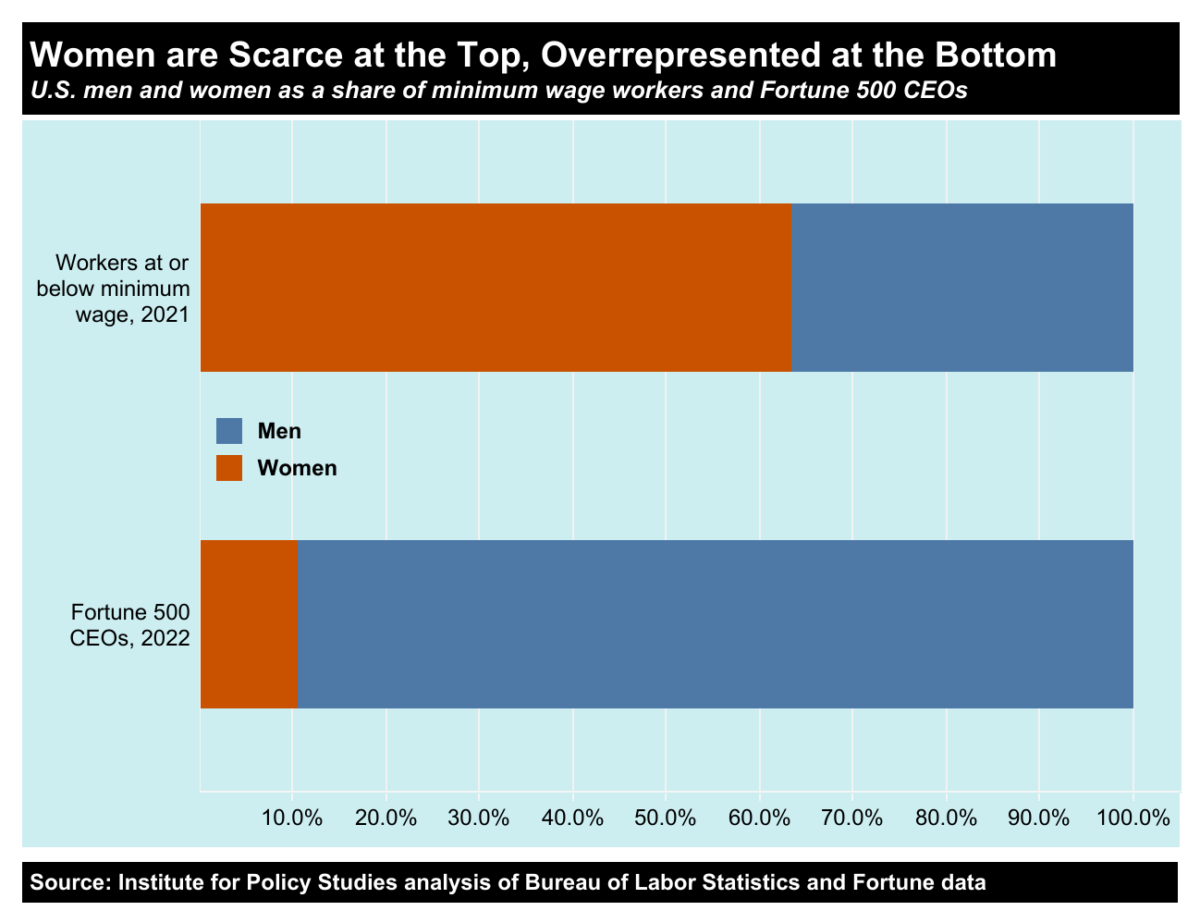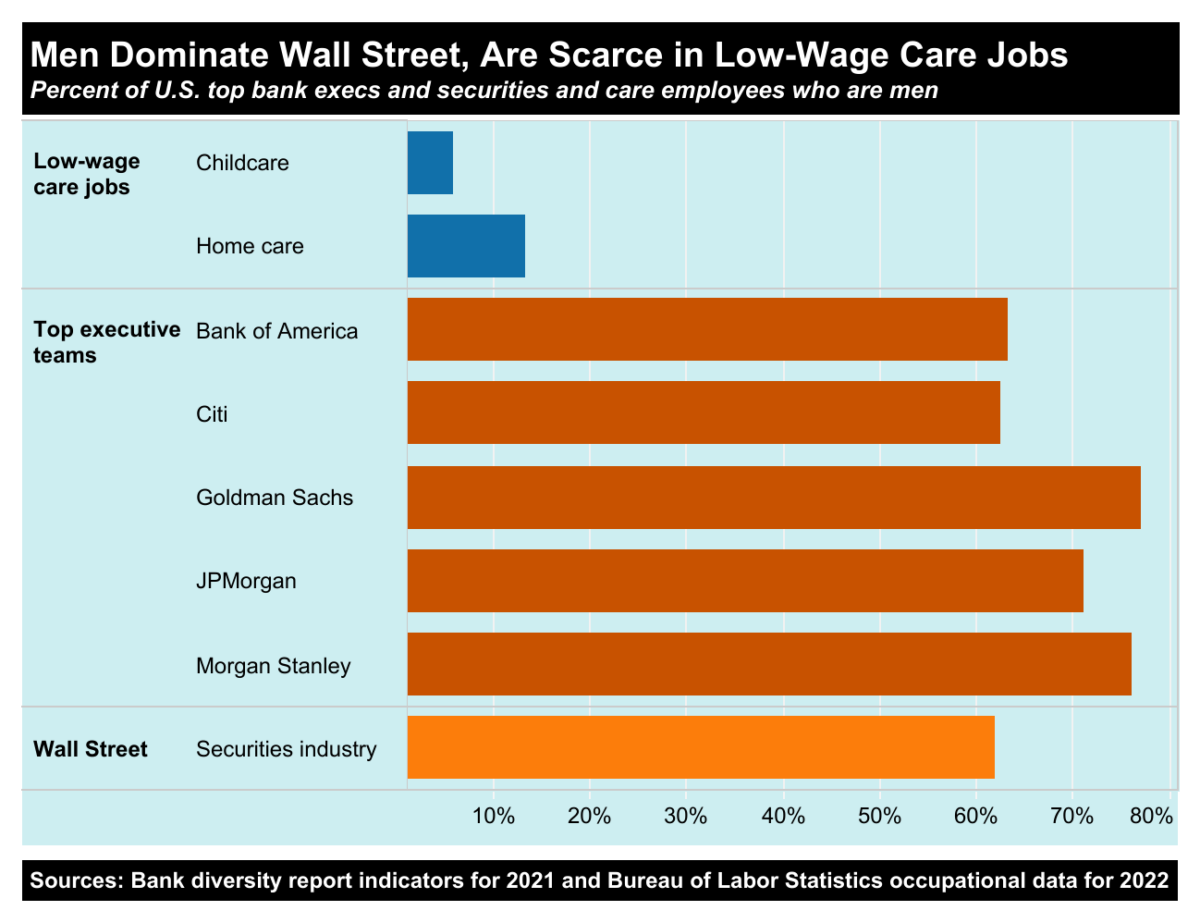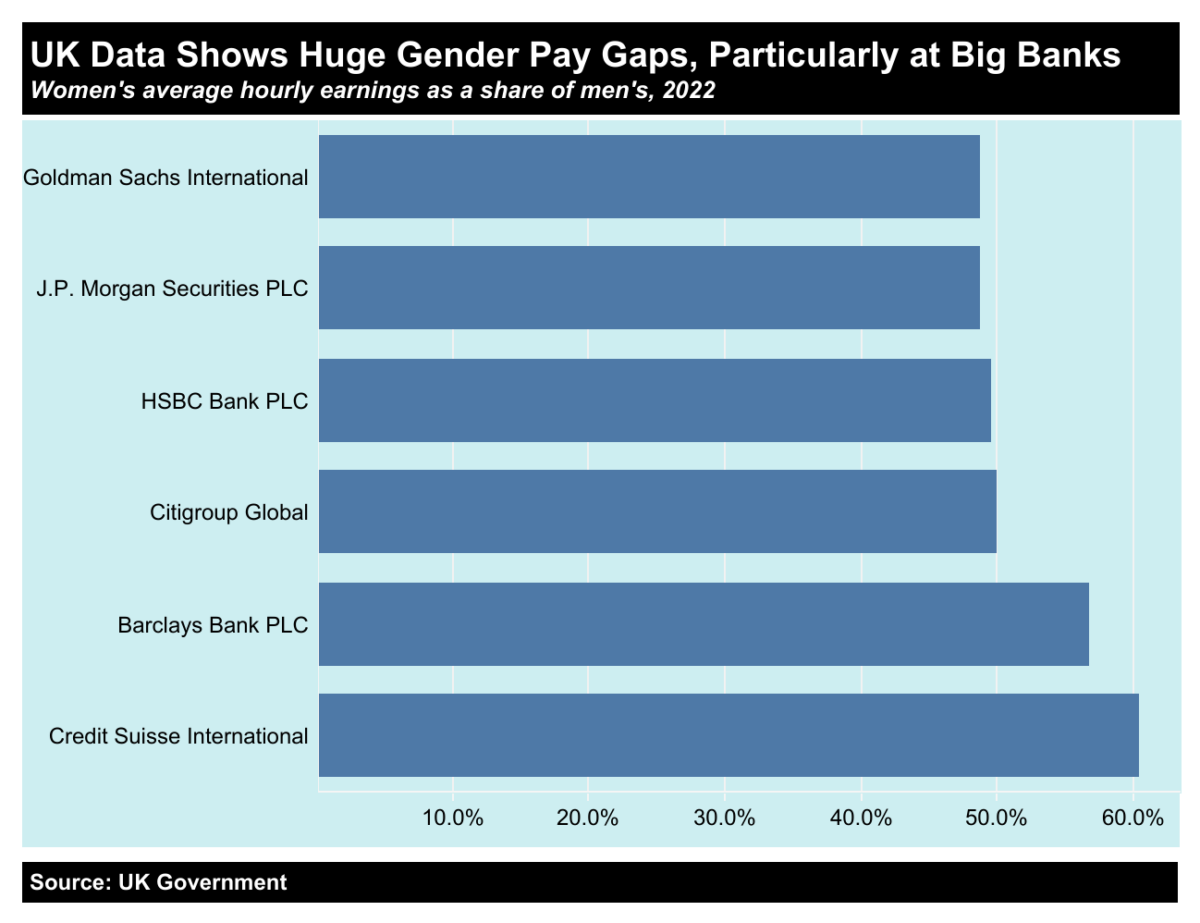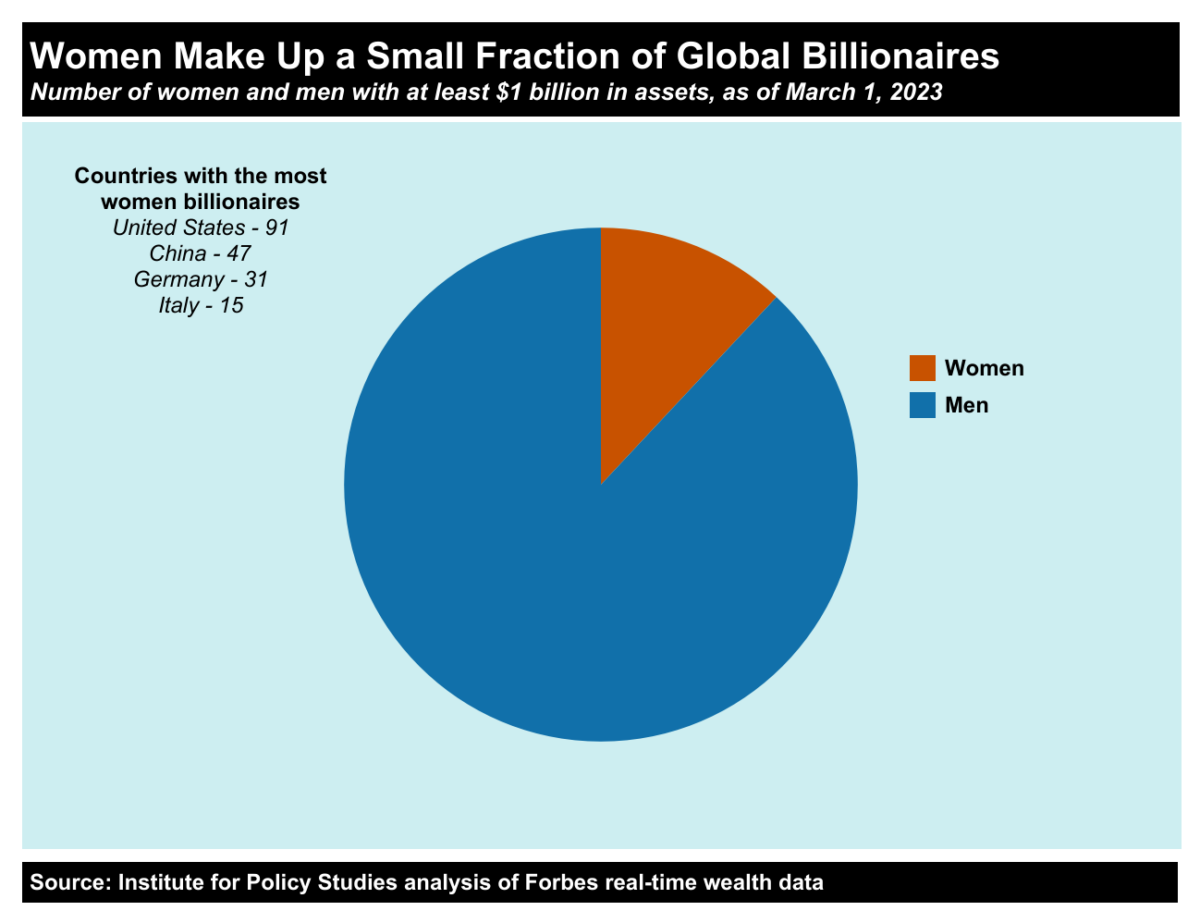For the first time ever, women CEOs now make up more than 10 percent of Fortune 500 leaders. But that’s hardly a reason to celebrate. On every indicator, white men still dominate the upper rungs of the economy, while women — particularly women of color — continue to be overrepresented in low-paying jobs.
And even when women do break through the glass ceiling, they’re still part of a system designed to enrich those at the top on the backs of those with the least economic and political power.

The 53 women CEOs in the Fortune 500 are still just a tiny fraction of an elite group that earned $18.3 million on average in 2021. By contrast, women make up 63.5 percent of workers earning the federal minimum wage, a rate stuck at $7.25 since 2009.

Men also dominate lucrative Wall Street jobs. We took a look at the demographics of the senior executive and management teams at the five largest U.S. investment banks. The percentage who are men at JPMorgan Chase: 71 percent, Goldman Sachs: 77 percent, Bank of America: 63 percent, Morgan Stanley: 76 percent, and Citigroup: 62 percent.
On the low end of the income scale, men make up a very small share of the care workers who provide essential services and yet earn some of the country’s lowest salaries. Men make up just 5.7 percent of childcare workers, an occupation that pays $26,680 per year, on average, and only 13 percent of home health aides, who average $29,260 per year.
These gender gaps mirror racial gaps. For instance, Black workers hold just 6.4 percent of lucrative securities industry jobs but 32.5 percent of home health and 29.5 percent of nursing home jobs.

Because of the scarcity of women in top financial industry positions, large banks have some of the widest gender pay gaps. The UK government requires corporations with more than 250 employees to disclose the pay gaps between the men and women on their payrolls. In 2022, Goldman Sachs International reported the biggest gap in the financial sector. Women at the bank earn just 48.7 cents on average for every $1 earned by men.

At the tippy top of the economic ladder, the global billionaire class has more than doubled since 2010. But women remain a small minority of the club. As of March 1, 2023, only 298 women ranked among the world’s 2,489 billionaires, accounting for less than 12 percent of the total.
Will Replacing Men With Women Make a Difference?
These are just a few indicators of how economic power is highly concentrated and deeply entrenched at the top. Yes, some women manage to climb to the peak of the pyramid. But when they reach the top, they’re still part of a system designed to extract wealth from those on the bottom to benefit those with the most power and wealth.
Carly Fiorina, for example, was the first woman to lead a Fortune Top 20 company as the CEO of Hewlett-Packard from 1999 to 2005. As we reported at the time, the future Republican presidential candidate took a more cut-throat approach to the company’s workforce than the men who preceded her — and was generously rewarded for it. She laid off 25,700 workers in 2021 and then saw her pay jump 231 percent.
Today’s leading women CEOs have done little to change the top-heavy corporate model. In 2021, Jane Fraser became the first woman to lead a major U.S. bank. While she’s garnered headlines for speaking about work-life balance, Citi still pays their bank tellers an average of $15.86 per hour, according to Payscale estimates. Nationwide, more than 83 percent of bank tellers are women. Meanwhile, Fraser enjoyed a compensation bump from $20.5 million in 2021 to $22.1 million last year, despite a steep drop in the bank’s profits and calls for new layoffs.
It’s not right that we have so few women in leadership roles. But simply replacing more men with women at the top of our current system is not the solution to our inequality problem. If we want all workers to receive a fair reward for their labor — regardless of their gender or race — we need to rebalance our economy by boosting worker power and reining in the economic and political clout of those at the top.
Our most important fundraising appeal of the year
December is the most critical time of year for Truthout, because our nonprofit news is funded almost entirely by individual donations from readers like you. So before you navigate away, we ask that you take just a second to support Truthout with a tax-deductible donation.
This year is a little different. We are up against a far-reaching, wide-scale attack on press freedom coming from the Trump administration. 2025 was a year of frightening censorship, news industry corporate consolidation, and worsening financial conditions for progressive nonprofits across the board.
We can only resist Trump’s agenda by cultivating a strong base of support. The right-wing mediasphere is funded comfortably by billionaire owners and venture capitalist philanthropists. At Truthout, we have you.
We’ve set an ambitious target for our year-end campaign — a goal of $250,000 to keep up our fight against authoritarianism in 2026. Please take a meaningful action in this fight: make a one-time or monthly donation to Truthout before December 31. If you have the means, please dig deep.
